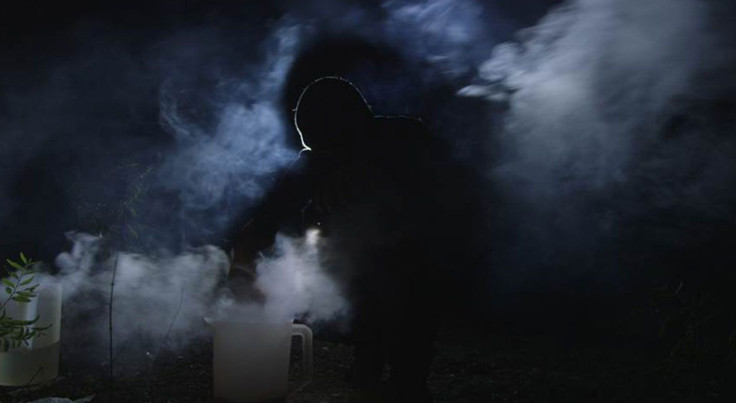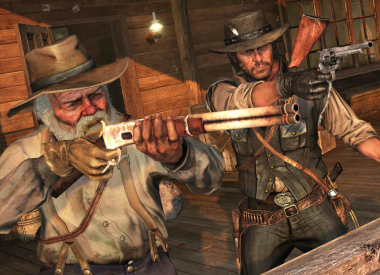Cartel Land opens with cartel members cooking meth somewhere in the Michoacán wildernesses of Mexico. They use half-gallon milk jugs and paint buckets, sometimes holding a paint respirator over their mouths, sometimes not. There is no lab, no shiny equipment. Cartel Land ends with the reveal that these men are police officers; that a drug cartel had metastasized inside the very body meant to police the drug cartel. Cartel Land is a very distressing movie.
Director Matthew Heineman on Cartel Land
Cartel Land is not about the internal operation of the Mexican drug cartels, but about the violent recourse taken against endless violence the cartels inflict on rural Mexicans caught up in the monstrous drug economy.
We catch glimpses of the despicable wealth hoarded by the Knights Templar (who do indeed fetishize Medieval swords and sigils) and La Familia cartels, but the far more common sight in Cartel Land is the violence of their lashing out. People describe being the only survivors of deadly encounters with the cartel’s whims. Rural farmers and villagers have photos on their cellphones of their decapitated neighbors.
A Michoacán doctor, José Manuel Mireles, creates the Autodefensas to fight back. While the Autodefensas are hailed as saviors in Mireles hometown of Tepalcatepac, much of Cartel Land charts their slow turn toward thuggery, exploitation, and final, complete co-option.
While the violence of the drug war in Mexico is fuel for our TV shows and news broadcasts, Cartel Land becomes more than a litany of horrors by documenting the astounding reach of drug money. It is not a matter of gangs, but of entire economies enveloping every institutional level.
Cartel Land will wash away any illusion that the drug wars are the product of mere crime. Those men hanging by their necks from a Michoacán freeway are not the victims of a single act of gang violence. The scale, insidiousness and pervasiveness of the cartels are more akin to the futility many Americans feel at the corrupted but untouchable abuses of the finance industry.
Cartel Land will shock you when the genial Doctor Mireles, with his Sam Elliott mustache and way with children, orders a man executed for having cartel tattoos, but that’s just the beginning of Cartel Land’s sickening downward lurch into utter hopelessness. Soon Mireles looks like an idealistic dove (albeit one prone to aggressive flirtation), as his out-of-control Autodefensas turn from celebrated liberators into torture squads abducting people in broad daylight.
By the time Doctor Mireles moans to his closest advisors, “we don’t want our movement to go bad,” it’s already too late.
Cartel Land also spends some time north of the border, following Arizona Border Recon as they play soldier in the mountainous regions along the U.S.-Mexican border. These portions are less harrowing, since much of their dramatic crusade comes from the trumped up rhetoric of the assorted racists and militants that flock to the movement. Still, Tim “Nailer” Foley, the leader of the paramilitary group, is correct that our institutional neglect has made a mess of the borderlands.
There are victims and victimizers, winners and losers, in the endless drug war of Cartel Land, but they are all trapped in the grasp of an economic monster. After lamenting the world-hopping resources available to the documentary crew a drug cook tells the camera “If we started paying attention to our hearts, then we’d get screwed over.” He may be a corrupt police officer, cooking drugs to buy arms to fight a war against another cartel, but by the end of Cartel Land you’ll find it impossible to tell him that he’s incorrect.


















